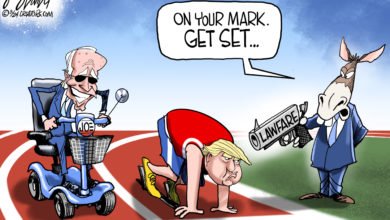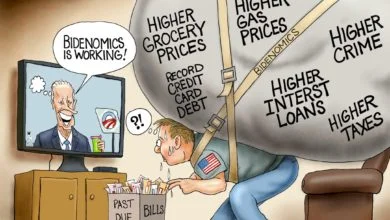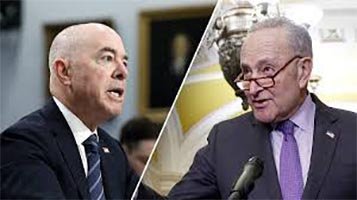Fiat Money, the Gold Standard, and the Deficit

On August 15, 1971, President Richard Nixon ended the US gold standard for the trading of gold. The Bretton Woods System, enacted in 1946, created a system of fixed exchange rates that allowed all governments to sell their gold to the United States treasury at the price of $35/ounce. To be more precise, Nixon ended the Bretton Woos System, thus severing, for the first time in history, formal links between the major world currencies and real commodities. The gold standard effectively ended in 1933 when President Franklin D. Roosevelt outlawed private gold ownership (except for the purposes of jewelry). Today, almost every country in the world, including the United States, is on a system of fiat money. [emphasis mine]
So what does leaving the gold standard have to do with the current financial crisis, the Obama administration, the fiduciary policies of both parties, and the deficit? Let’s examine that question.
During the past 25 years, Congress has made as many as fifteen attempts, all failures, to control government spending, aimed ultimately at a balanced budget. The most recent failure is the “super committee.” The budget deficit and the rise of government spending has a very simple explanation: The Obama administration, Congress (both parties), and the Treasury are in possession of several open-ended charge accounts with no limits – “permanent credit card financing.” With its charge cards the Treasury can borrow new credit (money) from the banking system, much of what it needs every year to finance the ever-rising budget deficit. The Federal Reserve has created about $1.7 trillion of new credit (money) with which to purchase Treasury debt. Foreign central banks, such as in China, have created about $2.7 trillion of new credit to purchase U.S. Treasury bonds. This global electronic money-printing exercise has financed almost 30% of the total direct debt of the U.S. Treasury.
Current Federal Reserve chairman Ben Bernanke, in 2002, said, “[T]he US government has a technology, called a printing press (or, today, its electronic equivalent), that allows it to produce as many US dollars as it wishes at essentially no cost.” He also could have added that these fiat dollars, printed by the Federal Reserve, are the enablers of the US budget deficit. Further, because the dollar is the world’s reserve currency, foreign central banks also finance US budget deficits. Domestic and foreign commercial banks supply vast amounts of new credit to the US Treasury because foreign banks define US sovereign bonds as high quality assets for which bank reserves are not necessary.
What, exactly, is fiat money? It is, quite simply, paper money. It has no intrinsic value and serve only as a means of exchange. It is inflationary, it corrupts society’s morals, it leads to over indebtedness, it causes boom-and-bust cycles, and it ultimately leads to a depression. The purpose of government policy makers and their economic “experts” is to keep the fiat money scheme going.
The fiat-money scheme rests with the government’s central bank. The government-sponsored central bank holds the money-production monopoly, and creates fiat money ex nihilo. As Murray N. Rothbard says in his book The Mystery of Banking, it is a form of a form of embezzlement and thievery.
Ludwig von Mises, in The Theory of Money and Credit, said, “Money is the universally accepted means of exchange.” An increase in the money supply does not provide a social benefit. All more money does is reduce the purchasing power of all money. Because a rise in the money supply benefits the money producer most, any rational individual would like to be the among the money producers, or to be the sole money producer. And government is rational. It ain’t stupid.
And here is where the Obama administration enters the picture. Those who are willing to disrespect the principles of the free market, the unconditional respect of private property, will want to obtain full control over the money production monopoly. Once people have been made to think that the government is a well-meaning agent, it will monopolize money production. Having obtained the monopoly of money production, government will replace commodity money with fiat money, and legalized counterfeiting gets started. Admittedly, this has been going on for years, with both parties participating, but the Obama administration, particularly with Bernanke and his quantitative easing, has perfected the practice. Fiat money is injected into our financial system through bank-circulation credit. Banks extend credit and issue new money balances not backed by real savings.
Fiat money makes debt financing very attractive, especially for government. Government economists sing the praises of the advantages of the fiat-money scheme and central banking. And people must be made to think that they benefit from fiat money, that there is actually no alternative to a government-sponsored fiat-money scheme, and that abandoning fiat money and replacing it with commodity money would be economically disastrous.
Fiat money creates collective corruption by allowing government to expand, thereby corrupting an ever-greater number of people who seek jobs, generous handouts, and business opportunities offered by government. People increasingly depend upon government, making their personal career and business success dependent on an expanding government apparatus. And many people even start investing their lifetime savings in fiat-denominated “secure” government bonds. A government default becomes unthinkable and the debt ceiling must be raised. In times of crisis, the printing of ever-greater amounts of money for underpinning government finances and beneficiaries will be cast as the least evil fiscal policy.
Do all of the problems caused by fiat money sound familiar?
The “solution” for the spending problem can be controlled in Congress. All it has to do is “to tear up” government’s credit cards. The solution is authorized by the US Constitution, in Article I, Section 8 and Section 10. The control of the supply of dollars is entrusted to the hands of the people. Congress need only evoke Article I, the constitutional power “to coin money and regulate the value thereof.” From 1792 to 1971 Congress defined by law the gold value of the currency such that paper dollars and bank demand deposits were convertible to their gold equivalent.
The discipline of convertibility to real, universally acceptable commodities, such as gold, would set limits on the Treasury access to its Federal Reserve “credit card.” Under a true gold standard, the Federal Reserve and commercial banks would be required by law to maintain dollar-gold convertibility at the statutory gold-dollar parity rate (whatever it turns out to be), or suffer insolvency. In order to maintain the dollar/gold convertibility, the Federal Reserve and the commercial banks must reduce the quantity of money and credit, including credit to the Treasury, thus controlling government spending increases and, therefore, deficits. Further, there is evidence that the gold standard (convertibility) stabilized the value of the dollar. Under the gold standard, the price level in 1914 was at almost exactly the same level as it was in 1879 and in 1834. But from 1971 until 2011, the purchasing power of the dollar (adjusted by the CPI) has fallen 85%.
The restoration of the gold standard provides a stop to (or slowdown of) government spending, or the government will risk insolvency. So should we return to the gold standard? Well, if you believe that the deficit is this country’s largest problem and must be reined in, you will favor it. Returning to the gold standard may be the only way to force discipline on Congress and unlimited Obama admistration spending.
But that’s just my opinion.





Sorry, you lost me:
1) why would we want to limit the size of our economy to the quantity of a physical element extracted from the ground? (and in our possession)?
2) how does the gold standard stop the Gov’t from spending? They can just take a larger share of GDP for gov’t purposes…
If we want to control gov’t spending, we shouldn’t try to have arbitrary economic limits do what the ballot box should. And politicians would push the gold standard to the brink (and beyond, to the harm of many) before they change their spending ways.
Wonderful submit, very informative. I’m wondering why the other specialists of this sector do not understand this. You should proceed your writing. I am confident, you have a huge readers’ base already!|What’s Taking place i am new to this, I stumbled upon this I have found It positively useful and it has helped me out loads. I am hoping to contribute & help different users like its aided me. Great job.
is a 2 currency theory possible? domestic only blue collar pay in hi-value currency based on gold,precious metals,oil,energy. and “linked” white collar international greenback fiat (based on all goods,services,commodities as before) for business,corperation, wall street. an example of use: a binding business contract between workers,government,and businesses. a worker would be paid in fiat, that would be converted to new currency at the bank. the fiat would be held as collateral (for a set time) and once the payment in new currency to the worker is cleared the fiat money would be returned to the business. new currency would be increased in value yearly in a slow computation till full value is reached (to slow demand inflation.)and there are other details also to be worked out. i have asked other websites about this theory since i have not found anything similar on the net? so i do not know if it is good,bad, or impossible to implement? thank you for allowing my economic theory comments.